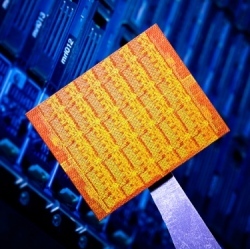
As powerful as today’s computers are, they still process instructions sequentially, meaning they execute them one after another, in order. If just one line of code is corrupted, a program can freeze, and consequently lead to a full-on crash.
However, computer scientists at University College London (UCL) are building what they’re calling a "systemic computer," modeled after the neurons in our brains. Instead of loading instructions sequentially, the systemic computer divvies them up to several connected "systems" that then carry them out simultaneously. By splitting the instructions up, no one system is prioritized over the other. Each system has its own individual memory chips, which serves two purposes: it sandboxes rogue code in, and allows instructions to keep operating without needing to wait for prior instructions to finish first.
But, lets say one system does become corrupted, what happens then? Not to worry, because the corrupted code can be repaired by using a clean copy stashed on the other systems. Yes, there will be data redundancies, but it’s a necessary evil when creating a crash-proof computer.
While a systemic computer has its advantages, UHL’s Dr. Peter Bentley told Humans Invent that he doesn’t believe they’ll become widespread for more than advanced research projects as they’re basically incompatible with traditional computers. There goes our dreams of never lashing out at our computers again when something goes wrong.
